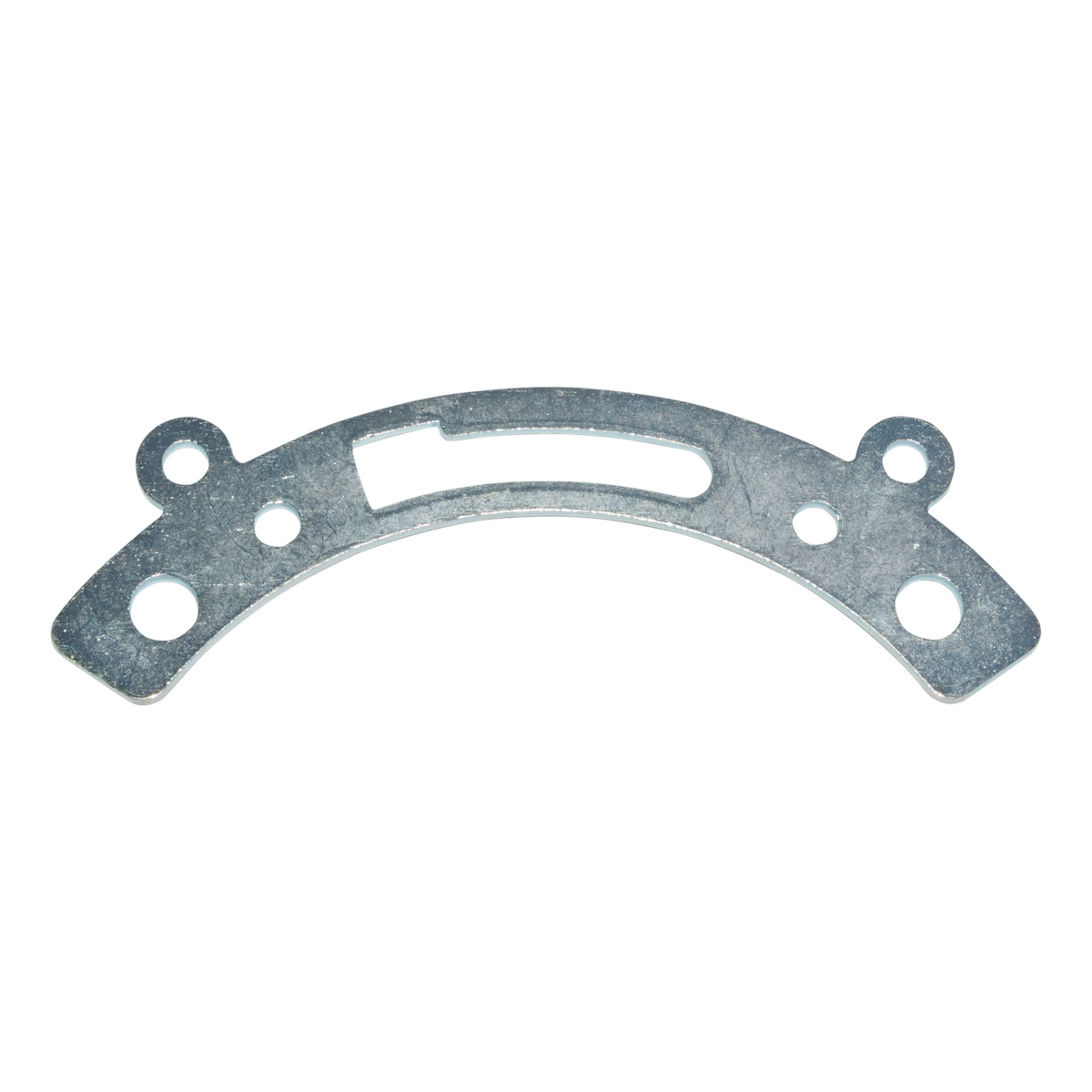We've uncovered this post pertaining to How to Replace a Toilet Flange directly below on the net and think it made perfect sense to write about it with you over here.

Introduction:
Comprehending the Importance of a Toilet Flange:
In the realm of plumbing, the often-overlooked bathroom flange plays an essential function in making sure the smooth procedure of your washroom components. As an important adapter in between your toilet and the underlying waste pipe, the commode flange works as the unsung hero of your plumbing system. Without this durable element, your bathroom would certainly be prone to instability and leaks, possibly resulting in pricey repair services and aggravation. For that reason, comprehending the relevance of a properly installed and preserved commode flange is critical for any kind of property owner starting plumbing jobs or attending to repair service demands.
Why Proper Installation and Maintenance Matter:
Correct setup and meticulous upkeep of the toilet flange are essential for protecting the honesty of your plumbing facilities. A carefully installed flange not just anchors your bathroom firmly in place yet additionally creates an impenetrable seal, fending off the perils of leaks and odours. By embracing an aggressive approach to flange upkeep, you can alleviate the risk of disruptive plumbing concerns and protect the serenity of your household environment. Throughout this insightful overview, we'll untangle the intricacies of commode flange installment and repair work, encouraging you with the knowledge and experience to navigate these necessary tasks adeptly.
Finest Practices When Installing a Toilet Flange:
Guaranteeing a smooth commode flange installment needs adherence to a collection of best practices that guarantee sturdiness and performance. Begin by thoroughly assessing your tools and materials, ensuring you have the needed tools for the work ahead. Picking the suitable flange material, whether PVC, ABS, or cast iron, is paramount, as it determines the long life and performance of your plumbing fixture. Additionally, evaluating existing plumbing problems, such as looking for damage or deterioration, is necessary for preemptively dealing with prospective complications and making certain a smooth installment procedure. By taking on these preparatory actions, you established a strong foundation for a successful toilet flange installment, reducing the possibility of future issues and helping with lasting maintenance.
Once appropriately prepared, proceed with the cautious removal of the old flange, complying with an organized strategy to stay clear of creating damage to surrounding components. Utilize techniques customized to address persistent or rusted flanges, guaranteeing their swift and safe removal without endangering the integrity of the surrounding plumbing framework. With the old flange eliminated, carefully set up the brand-new substitute flange, picking one that fits comfortably and firmly right into location. Effectively safeguarding the flange to the floor utilizing screws or adhesive is important, as it guarantees security and prevents future leakages. By sticking to these ideal methods during the installment procedure, you prepared for a durable and reliable bathroom flange configuration that stands up to the examination of time.
Setting Up a New Toilet Flange:
When mounting a new bathroom flange, the very first step is to pick the ideal replacement for your plumbing setup. Consider elements such as the product of the flange, with alternatives consisting of PVC, ABS, or cast iron. PVC flanges are recognized for their price and resistance to rust, making them a popular selection for DIY enthusiasts. ABS flanges use comparable benefits to PVC yet brag added durability, making them suitable for high-traffic locations or commercial setups. Cast iron flanges, renowned for their toughness and long life, are suitable for setups where durability is critical. In addition, ensure that the substitute flange is properly sized and fits comfortably into location to develop a watertight seal and stop leakages.
Safeguarding the Flange to the Floor:
As soon as you've chosen the right substitute flange, it's vital to safeguard it appropriately to the floor to ensure stability and stop future concerns. Begin by positioning and lining up the flange correctly over the drain, guaranteeing that it sits flush with the floor surface area. Depending upon the sort of flange and your specific installation choices, you can secure the flange to the flooring utilizing screws or sticky. If utilizing screws, make certain to use corrosion-resistant alternatives to avoid rusting with time. Conversely, adhesive can give a protected bond in between the flange and the flooring, guaranteeing a tough and trustworthy installation. By following these steps and taking the needed precautions, you can install a new commode flange with self-confidence, ensuring a durable and leak-free plumbing component.
Finest Practices When Repairing a Broken Flange:
Repairing a damaged commode flange demands meticulous focus to information and adherence to best techniques to make sure a long-term solution. Begin by thoroughly analyzing the degree of the damage and identifying the underlying cause, whether it be rust, cracks, or misalignment. This analysis will certainly direct your repair work approach, permitting you to select the most appropriate methods and products for restoring the flange to its optimal problem. Furthermore, think about the surrounding plumbing facilities and flooring security to resolve any kind of prospective contributing factors and protect against future issues from arising. By carrying out a comprehensive analysis and evaluation, you prepared for an effective and enduring fixing procedure that deals with the source of the trouble.
With a clear understanding of the flange's condition and the aspects influencing its damage, wage the repair process making use of accuracy and care. Depending on the severity of the damage, you may opt for fixing approaches such as epoxy putty, repair flange packages, or partial flange replacements. Ensure that the picked repair method effectively resolves the certain problems at hand while keeping the structural integrity and capability of the flange. Additionally, take positive actions to reinforce the repaired flange and stop future damage, such as using sealer or waterproofing products to guard versus leaks and corrosion. By sticking to these ideal practices during the repair service procedure, you can restore your busted flange to optimal condition, guaranteeing the long-term integrity and performance of your plumbing system.
Sorts Of Toilet Flanges:
Recognizing the numerous kinds of bathroom flanges is crucial for selecting the most ideal alternative for your plumbing needs. PVC, ABS, and cast iron are amongst the usual products utilized in bathroom flange building and construction, each offering unique benefits and factors to consider. PVC flanges, known for their price and rust resistance, are favoured for their ease of installment and toughness. ABS flanges, comparable to PVC in terms of cost and convenience of installment, are prized for their toughness and resistance to impacts. On the other hand, cast iron flanges, renowned for their phenomenal stamina and durability, are commonly chosen for high-traffic areas or industrial settings where longevity is extremely important. By familiarising yourself with the qualities of each product, you can make an educated choice when picking a toilet flange that aligns with your particular requirements and preferences.
In addition to material considerations, commode flanges additionally are available in various styles and designs to suit different plumbing setups and installation choices. Offset flanges, for instance, are created to accommodate bathrooms mounted on floorings that are uneven or where the waste pipe is located off-centre. Similarly, repair service flanges, additionally known as repair service rings or spacer rings, are made use of to address issues such as broken or broken flanges without the demand for comprehensive plumbing adjustments. In addition, flexible flanges supply adaptability ready, allowing for exact placement and fit during installment. By exploring the diverse variety of toilet flange kinds and designs offered, you can choose the choice that best matches your plumbing arrangement and installment demands, ensuring a smooth and reputable remedy for your shower room fixtures.
Specialized Options:
Along with traditional bathroom flanges, there are specialized choices available to resolve particular plumbing obstacles and installation preferences. One such choice is the offset flange, which is made to suit toilets installed on floorings that are uneven or where the waste pipe is located off-centre. Offset flanges include a special style that allows the bathroom to be positioned at a slight angle, making up for uneven flooring or misaligned plumbing links. This innovative solution ensures a safe and secure and steady installment, removing the demand for expensive and taxing floor progressing or pipe moving. By including a balanced out flange right into your plumbing arrangement, you can overcome typical installation obstacles and achieve a professional-quality result effortlessly.
One more specialized choice worth considering is the repair work flange, likewise known as a fixing ring or spacer ring. Repair flanges are specifically developed to deal with concerns such as broken or damaged commode flanges without the need for considerable plumbing alterations. These functional parts can be installed directly over the existing flange, providing a durable and reputable base for protecting the toilet in place. Repair flanges come in different dimensions and arrangements to fit various flange diameters and installment requirements, making them a practical and cost-effective remedy for resolving flange-related problems. Whether you're handling a small flange repair service or an extra intricate plumbing issue, integrating specialized alternatives like offset and repair service flanges can improve the setup process and make certain lasting performance for your washroom components.
Conclusion:
To conclude, understanding the art of commode flange installment and repair work is crucial for maintaining a practical and leak-free plumbing system in your house. By recognizing the significance of a properly set up flange and adhering to best practices throughout the procedure, you can guarantee the durability and dependability of your shower room fixtures. Whether you're selecting the appropriate type of flange, performing repair work, or discovering specialty choices, attention to detail and careful execution are crucial. Routine maintenance and proactive fixing can aid avoid pricey plumbing problems and protect the serenity of your household setting. Equipped with the expertise and abilities gotten from this detailed guide, you can deal with commode flange setup and repair work with self-confidence, equipping you to safeguard your plumbing system for years ahead.
TOILET REPAIR HOW TO REPLACE A BROKEN TOILET FLANGE
First remove the toilet. Turn off the water line, flush the toilet, and remove the water line from the bottom of the toilet tank. Have bucket handy, as water will come out of the tank. Sponge out as much water from the tank and bowl as you can. A handyman trick is to use a wet dry shop vac to suck all the water out of the bowl and tank.
Remove the nuts on each side of the base of the toilet. These nuts-bolts attach the toilet to the flange. You may have to use a saw to cut the nuts off, which is ok, because you are going to put in new toilet bolts and nuts. The flange, when brand new, is attached to the waste pipe. Many times it rusts or snaps off. Tilt the toilet on its side and move out of the way. Have a helper assist you in moving the toilet, they are heavy and bulky.
Use a putty knife to remove the wax ring residue from the exposed flange and inspect the flange and surrounding area. What is key here is if the wood subfloor is rotted. If this is the case, you will have to cut out the surrounding subfloor and replace it with new plywood, then fix the flange.
Thankfully on this home improvement project, the subfloor was fine, just the flange fell apart. Go to your hardware store and buy a Super Ring Replacement Toilet Ring. There are several models by different suppliers, don't buy the cheapest one, its your toilet, remember...
Also at the hardware store buy new toilet mounting bolts, they usually come in a package with the nuts and washers.
Put the toilet mounting bolts in the flange pointing up, and use some wax from the old wax ring to hold them in place. Place the super ring replacement toilet ring over the waste line, making sure the mounting bolts are in the same place as the original bolts were, one bolt on each side of the flange.
Screw the new flange into the subfloor. You may have to use a hammer drill to drill through existing tile flooring or cement substrate. Set the new toilet wax ring onto the flange on the base of the toilet, and guide the toilet back onto the super ring, making sure the toilet mounting bolts are lined up with the mount holes in the toilet base. The super ring toilet ring allows for you to adjust the location of the bolts.
https://www.gardenfork.tv/toilet-repair-how-to-replace-a-broken-toilet-flange/

As a fervent person who reads on How to Replace a Toilet Flange, I think sharing that section was a smart idea. Sharing is caring. You just don't know, you could be doing someone a favor. We take joy in your readership.
Free Estimate
 Danny Tamberelli Then & Now!
Danny Tamberelli Then & Now! Josh Saviano Then & Now!
Josh Saviano Then & Now! Molly Ringwald Then & Now!
Molly Ringwald Then & Now! Mackenzie Rosman Then & Now!
Mackenzie Rosman Then & Now! Traci Lords Then & Now!
Traci Lords Then & Now!